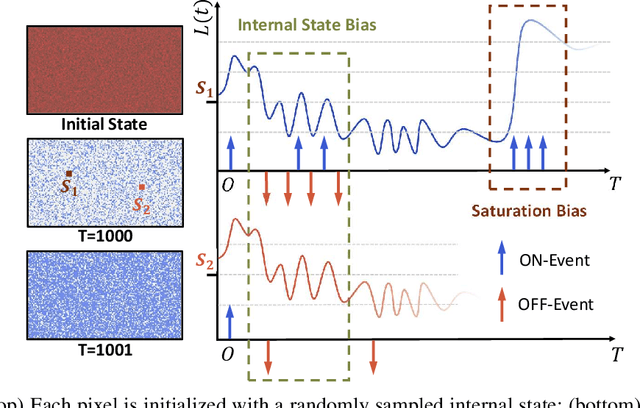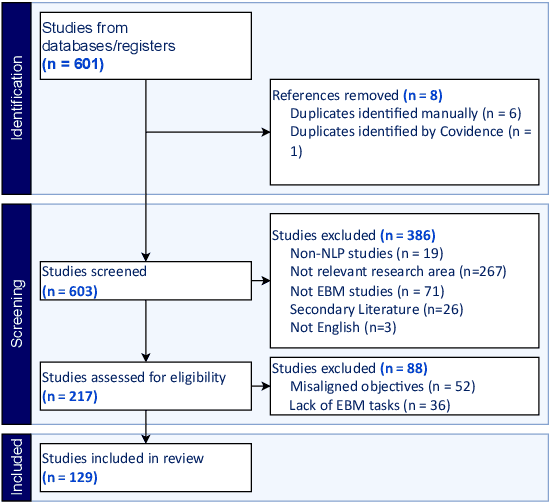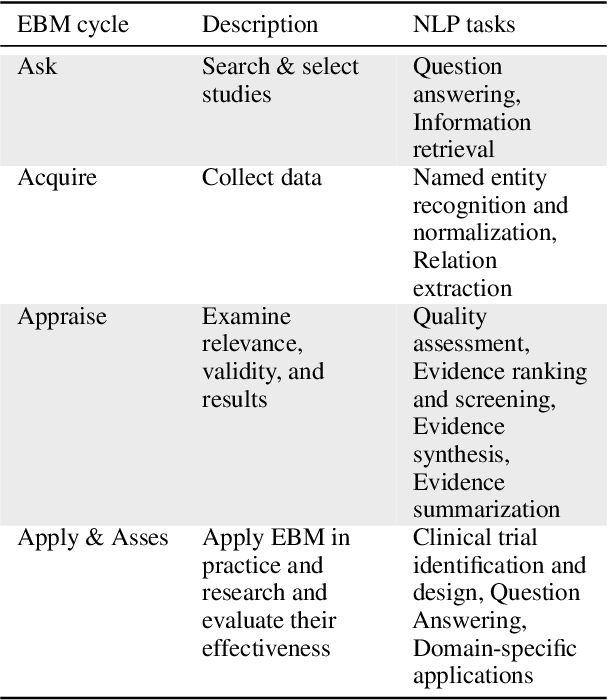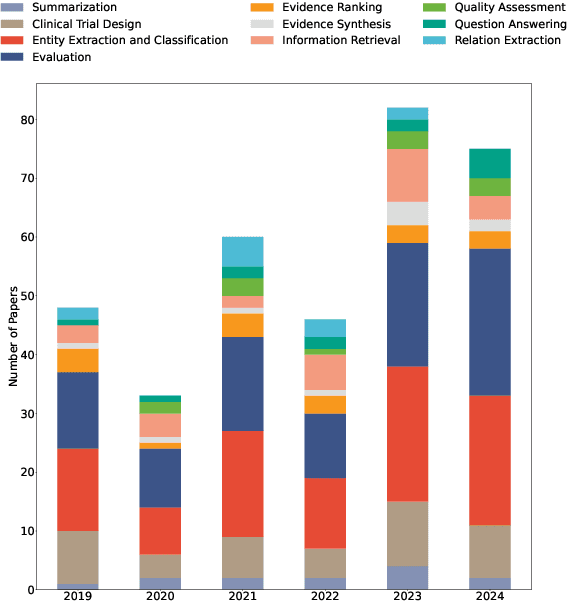Yifan Peng
Ret.
Two-Stage Decoupling Framework for Variable-Length Glaucoma Prognosis
Sep 15, 2025Abstract:Glaucoma is one of the leading causes of irreversible blindness worldwide. Glaucoma prognosis is essential for identifying at-risk patients and enabling timely intervention to prevent blindness. Many existing approaches rely on historical sequential data but are constrained by fixed-length inputs, limiting their flexibility. Additionally, traditional glaucoma prognosis methods often employ end-to-end models, which struggle with the limited size of glaucoma datasets. To address these challenges, we propose a Two-Stage Decoupling Framework (TSDF) for variable-length glaucoma prognosis. In the first stage, we employ a feature representation module that leverages self-supervised learning to aggregate multiple glaucoma datasets for training, disregarding differences in their supervisory information. This approach enables datasets of varying sizes to learn better feature representations. In the second stage, we introduce a temporal aggregation module that incorporates an attention-based mechanism to process sequential inputs of varying lengths, ensuring flexible and efficient utilization of all available data. This design significantly enhances model performance while maintaining a compact parameter size. Extensive experiments on two benchmark glaucoma datasets:the Ocular Hypertension Treatment Study (OHTS) and the Glaucoma Real-world Appraisal Progression Ensemble (GRAPE),which differ significantly in scale and clinical settings,demonstrate the effectiveness and robustness of our approach.
EventTracer: Fast Path Tracing-based Event Stream Rendering
Aug 25, 2025



Abstract:Simulating event streams from 3D scenes has become a common practice in event-based vision research, as it meets the demand for large-scale, high temporal frequency data without setting up expensive hardware devices or undertaking extensive data collections. Yet existing methods in this direction typically work with noiseless RGB frames that are costly to render, and therefore they can only achieve a temporal resolution equivalent to 100-300 FPS, far lower than that of real-world event data. In this work, we propose EventTracer, a path tracing-based rendering pipeline that simulates high-fidelity event sequences from complex 3D scenes in an efficient and physics-aware manner. Specifically, we speed up the rendering process via low sample-per-pixel (SPP) path tracing, and train a lightweight event spiking network to denoise the resulting RGB videos into realistic event sequences. To capture the physical properties of event streams, the network is equipped with a bipolar leaky integrate-and-fired (BiLIF) spiking unit and trained with a bidirectional earth mover distance (EMD) loss. Our EventTracer pipeline runs at a speed of about 4 minutes per second of 720p video, and it inherits the merit of accurate spatiotemporal modeling from its path tracing backbone. We show in two downstream tasks that EventTracer captures better scene details and demonstrates a greater similarity to real-world event data than other event simulators, which establishes it as a promising tool for creating large-scale event-RGB datasets at a low cost, narrowing the sim-to-real gap in event-based vision, and boosting various application scenarios such as robotics, autonomous driving, and VRAR.
Extracting Post-Acute Sequelae of SARS-CoV-2 Infection Symptoms from Clinical Notes via Hybrid Natural Language Processing
Aug 17, 2025Abstract:Accurately and efficiently diagnosing Post-Acute Sequelae of COVID-19 (PASC) remains challenging due to its myriad symptoms that evolve over long- and variable-time intervals. To address this issue, we developed a hybrid natural language processing pipeline that integrates rule-based named entity recognition with BERT-based assertion detection modules for PASC-symptom extraction and assertion detection from clinical notes. We developed a comprehensive PASC lexicon with clinical specialists. From 11 health systems of the RECOVER initiative network across the U.S., we curated 160 intake progress notes for model development and evaluation, and collected 47,654 progress notes for a population-level prevalence study. We achieved an average F1 score of 0.82 in one-site internal validation and 0.76 in 10-site external validation for assertion detection. Our pipeline processed each note at $2.448\pm 0.812$ seconds on average. Spearman correlation tests showed $\rho >0.83$ for positive mentions and $\rho >0.72$ for negative ones, both with $P <0.0001$. These demonstrate the effectiveness and efficiency of our models and their potential for improving PASC diagnosis.
A Multi-Stage Large Language Model Framework for Extracting Suicide-Related Social Determinants of Health
Aug 07, 2025Abstract:Background: Understanding social determinants of health (SDoH) factors contributing to suicide incidents is crucial for early intervention and prevention. However, data-driven approaches to this goal face challenges such as long-tailed factor distributions, analyzing pivotal stressors preceding suicide incidents, and limited model explainability. Methods: We present a multi-stage large language model framework to enhance SDoH factor extraction from unstructured text. Our approach was compared to other state-of-the-art language models (i.e., pre-trained BioBERT and GPT-3.5-turbo) and reasoning models (i.e., DeepSeek-R1). We also evaluated how the model's explanations help people annotate SDoH factors more quickly and accurately. The analysis included both automated comparisons and a pilot user study. Results: We show that our proposed framework demonstrated performance boosts in the overarching task of extracting SDoH factors and in the finer-grained tasks of retrieving relevant context. Additionally, we show that fine-tuning a smaller, task-specific model achieves comparable or better performance with reduced inference costs. The multi-stage design not only enhances extraction but also provides intermediate explanations, improving model explainability. Conclusions: Our approach improves both the accuracy and transparency of extracting suicide-related SDoH from unstructured texts. These advancements have the potential to support early identification of individuals at risk and inform more effective prevention strategies.
Enhanced Velocity Field Modeling for Gaussian Video Reconstruction
Jul 31, 2025Abstract:High-fidelity 3D video reconstruction is essential for enabling real-time rendering of dynamic scenes with realistic motion in virtual and augmented reality (VR/AR). The deformation field paradigm of 3D Gaussian splatting has achieved near-photorealistic results in video reconstruction due to the great representation capability of deep deformation networks. However, in videos with complex motion and significant scale variations, deformation networks often overfit to irregular Gaussian trajectories, leading to suboptimal visual quality. Moreover, the gradient-based densification strategy designed for static scene reconstruction proves inadequate to address the absence of dynamic content. In light of these challenges, we propose a flow-empowered velocity field modeling scheme tailored for Gaussian video reconstruction, dubbed FlowGaussian-VR. It consists of two core components: a velocity field rendering (VFR) pipeline which enables optical flow-based optimization, and a flow-assisted adaptive densification (FAD) strategy that adjusts the number and size of Gaussians in dynamic regions. We validate our model's effectiveness on multi-view dynamic reconstruction and novel view synthesis with multiple real-world datasets containing challenging motion scenarios, demonstrating not only notable visual improvements (over 2.5 dB gain in PSNR) and less blurry artifacts in dynamic textures, but also regularized and trackable per-Gaussian trajectories.
Learned Off-aperture Encoding for Wide Field-of-view RGBD Imaging
Jul 30, 2025Abstract:End-to-end (E2E) designed imaging systems integrate coded optical designs with decoding algorithms to enhance imaging fidelity for diverse visual tasks. However, existing E2E designs encounter significant challenges in maintaining high image fidelity at wide fields of view, due to high computational complexity, as well as difficulties in modeling off-axis wave propagation while accounting for off-axis aberrations. In particular, the common approach of placing the encoding element into the aperture or pupil plane results in only a global control of the wavefront. To overcome these limitations, this work explores an additional design choice by positioning a DOE off-aperture, enabling a spatial unmixing of the degrees of freedom and providing local control over the wavefront over the image plane. Our approach further leverages hybrid refractive-diffractive optical systems by linking differentiable ray and wave optics modeling, thereby optimizing depth imaging quality and demonstrating system versatility. Experimental results reveal that the off-aperture DOE enhances the imaging quality by over 5 dB in PSNR at a FoV of approximately $45^\circ$ when paired with a simple thin lens, outperforming traditional on-aperture systems. Furthermore, we successfully recover color and depth information at nearly $28^\circ$ FoV using off-aperture DOE configurations with compound optics. Physical prototypes for both applications validate the effectiveness and versatility of the proposed method.
CXR-LT 2024: A MICCAI challenge on long-tailed, multi-label, and zero-shot disease classification from chest X-ray
Jun 09, 2025Abstract:The CXR-LT series is a community-driven initiative designed to enhance lung disease classification using chest X-rays (CXR). It tackles challenges in open long-tailed lung disease classification and enhances the measurability of state-of-the-art techniques. The first event, CXR-LT 2023, aimed to achieve these goals by providing high-quality benchmark CXR data for model development and conducting comprehensive evaluations to identify ongoing issues impacting lung disease classification performance. Building on the success of CXR-LT 2023, the CXR-LT 2024 expands the dataset to 377,110 chest X-rays (CXRs) and 45 disease labels, including 19 new rare disease findings. It also introduces a new focus on zero-shot learning to address limitations identified in the previous event. Specifically, CXR-LT 2024 features three tasks: (i) long-tailed classification on a large, noisy test set, (ii) long-tailed classification on a manually annotated "gold standard" subset, and (iii) zero-shot generalization to five previously unseen disease findings. This paper provides an overview of CXR-LT 2024, detailing the data curation process and consolidating state-of-the-art solutions, including the use of multimodal models for rare disease detection, advanced generative approaches to handle noisy labels, and zero-shot learning strategies for unseen diseases. Additionally, the expanded dataset enhances disease coverage to better represent real-world clinical settings, offering a valuable resource for future research. By synthesizing the insights and innovations of participating teams, we aim to advance the development of clinically realistic and generalizable diagnostic models for chest radiography.
Improving Multilingual Speech Models on ML-SUPERB 2.0: Fine-tuning with Data Augmentation and LID-Aware CTC
May 30, 2025Abstract:Multilingual speech processing with self-supervised or supervised pre-trained Speech Foundation Models (SFM) has achieved strong performance on tasks like Language Identification (LID) and Automatic Speech Recognition (ASR). However, these models struggle with limited resources during fine-tuning. This paper enhances multilingual LID and ASR on ML-SUPERB 2.0 by exploring multiple strategies for adapting SFMs, including frozen upstream training, partial fine-tuning, and low-rank adaptation. Furthermore, we employ data augmentation to mitigate performance gaps in few-shot settings and introduce LID Connectionist Temporal Classification (CTC) loss for regularization. Our approach achieves a 14% relative improvement in LID accuracy and a 30% relative reduction in ASR CER over the baseline on ML-SUPERB 2.0, securing second place in the Interspeech 2025 ML-SUPERB 2.0 Challenge.
Optimization-Free Diffusion Model -- A Perturbation Theory Approach
May 29, 2025Abstract:Diffusion models have emerged as a powerful framework in generative modeling, typically relying on optimizing neural networks to estimate the score function via forward SDE simulations. In this work, we propose an alternative method that is both optimization-free and forward SDE-free. By expanding the score function in a sparse set of eigenbasis of the backward Kolmogorov operator associated with the diffusion process, we reformulate score estimation as the solution to a linear system, avoiding iterative optimization and time-dependent sample generation. We analyze the approximation error using perturbation theory and demonstrate the effectiveness of our method on high-dimensional Boltzmann distributions and real-world datasets.
Natural Language Processing in Support of Evidence-based Medicine: A Scoping Review
May 28, 2025


Abstract:Evidence-based medicine (EBM) is at the forefront of modern healthcare, emphasizing the use of the best available scientific evidence to guide clinical decisions. Due to the sheer volume and rapid growth of medical literature and the high cost of curation, there is a critical need to investigate Natural Language Processing (NLP) methods to identify, appraise, synthesize, summarize, and disseminate evidence in EBM. This survey presents an in-depth review of 129 research studies on leveraging NLP for EBM, illustrating its pivotal role in enhancing clinical decision-making processes. The paper systematically explores how NLP supports the five fundamental steps of EBM -- Ask, Acquire, Appraise, Apply, and Assess. The review not only identifies current limitations within the field but also proposes directions for future research, emphasizing the potential for NLP to revolutionize EBM by refining evidence extraction, evidence synthesis, appraisal, summarization, enhancing data comprehensibility, and facilitating a more efficient clinical workflow.
 Add to Chrome
Add to Chrome Add to Firefox
Add to Firefox Add to Edge
Add to Edge